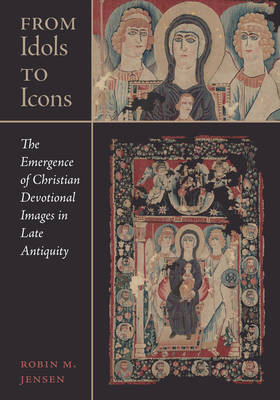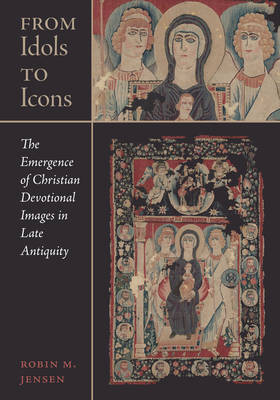
- Afhalen na 1 uur in een winkel met voorraad
- Gratis thuislevering in België vanaf € 30
- Ruim aanbod met 7 miljoen producten
- Afhalen na 1 uur in een winkel met voorraad
- Gratis thuislevering in België vanaf € 30
- Ruim aanbod met 7 miljoen producten
Zoeken
From Idols to Icons
The Emergence of Christian Devotional Images in Late Antiquity Volume 12
Robin M Jensen
€ 85,45
+ 170 punten
Omschrijving
Even the briefest glance at an art museum's holdings or an introductory history textbook demonstrates the profound influence of Christian images and art. From Idols to Icons tells the fascinating history of the dramatic shift in Christian attitudes toward sacred images from the third through the early seventh century. From attacks on the cult images of polytheism to the emergence of Christian narrative iconography to the appearance of portrait-type representations of holy figures, this book examines the primary theological critiques and defenses of holy images in light of the surviving material evidence for early Christian visual art. Against the previous assumption that fourth- and fifth-century Christians simply forgot or ignored their predecessors' censure and reverted to more alluring pagan practices, Robin M. Jensen contends that each stage of this profound change was uniquely Christian. Through a careful consideration of the cults of saints' remains, devotional portraits, and pilgrimages to sacred sites, Jensen shows how the Christian devotion to holy images came to be rooted in their evolving conviction that the divine was accessible in and through visible objects.
Specificaties
Betrokkenen
- Auteur(s):
- Uitgeverij:
Inhoud
- Aantal bladzijden:
- 252
- Taal:
- Engels
- Reeks:
Eigenschappen
- Productcode (EAN):
- 9780520345423
- Verschijningsdatum:
- 20/09/2022
- Uitvoering:
- Hardcover
- Formaat:
- Genaaid
- Afmetingen:
- 178 mm x 254 mm
- Gewicht:
- 385 g

Alleen bij Standaard Boekhandel
+ 170 punten op je klantenkaart van Standaard Boekhandel
Beoordelingen
We publiceren alleen reviews die voldoen aan de voorwaarden voor reviews. Bekijk onze voorwaarden voor reviews.











